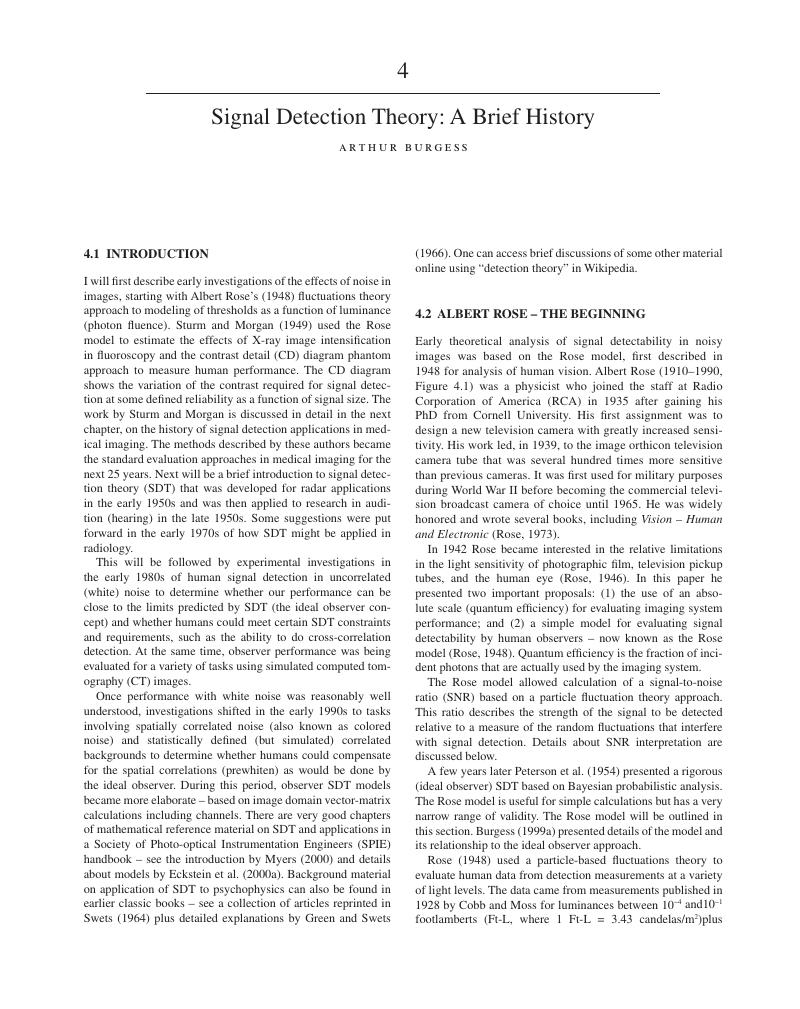Book contents
- The Handbook of Medical Image Perception and Techniques, Second Edition
- Reviews
- The Handbook of Medical Image Perception and Techniques
- Copyright page
- Dedication
- Contents
- Contributors
- 1 Medical Image Perception
- Part I Historical Reflections and Theoretical Foundations
- 2 A Short History of Image Perception in Medical Radiology
- 3 Spatial Vision Research without Noise
- 4 Signal Detection Theory: A Brief History
- 5 Signal Detection in Radiology
- 6 Lessons from Dinners with the Giants of Modern Image Science*
- 7 Perception in Context
- Part II Science of Image Perception
- Part III Perception Metrology
- Part IV Clinical Performance Assessment
- Part V Computational Perception
- Part VI Applied Perception
- Index
- References
4 - Signal Detection Theory: A Brief History
from Part I - Historical Reflections and Theoretical Foundations
Published online by Cambridge University Press: 20 December 2018
- The Handbook of Medical Image Perception and Techniques, Second Edition
- Reviews
- The Handbook of Medical Image Perception and Techniques
- Copyright page
- Dedication
- Contents
- Contributors
- 1 Medical Image Perception
- Part I Historical Reflections and Theoretical Foundations
- 2 A Short History of Image Perception in Medical Radiology
- 3 Spatial Vision Research without Noise
- 4 Signal Detection Theory: A Brief History
- 5 Signal Detection in Radiology
- 6 Lessons from Dinners with the Giants of Modern Image Science*
- 7 Perception in Context
- Part II Science of Image Perception
- Part III Perception Metrology
- Part IV Clinical Performance Assessment
- Part V Computational Perception
- Part VI Applied Perception
- Index
- References
Summary

Information
- Type
- Chapter
- Information
- The Handbook of Medical Image Perception and Techniques , pp. 28 - 48Publisher: Cambridge University PressPrint publication year: 2018
References
Accessibility standard: Unknown
Why this information is here
This section outlines the accessibility features of this content - including support for screen readers, full keyboard navigation and high-contrast display options. This may not be relevant for you.Accessibility Information
- 4
- Cited by
